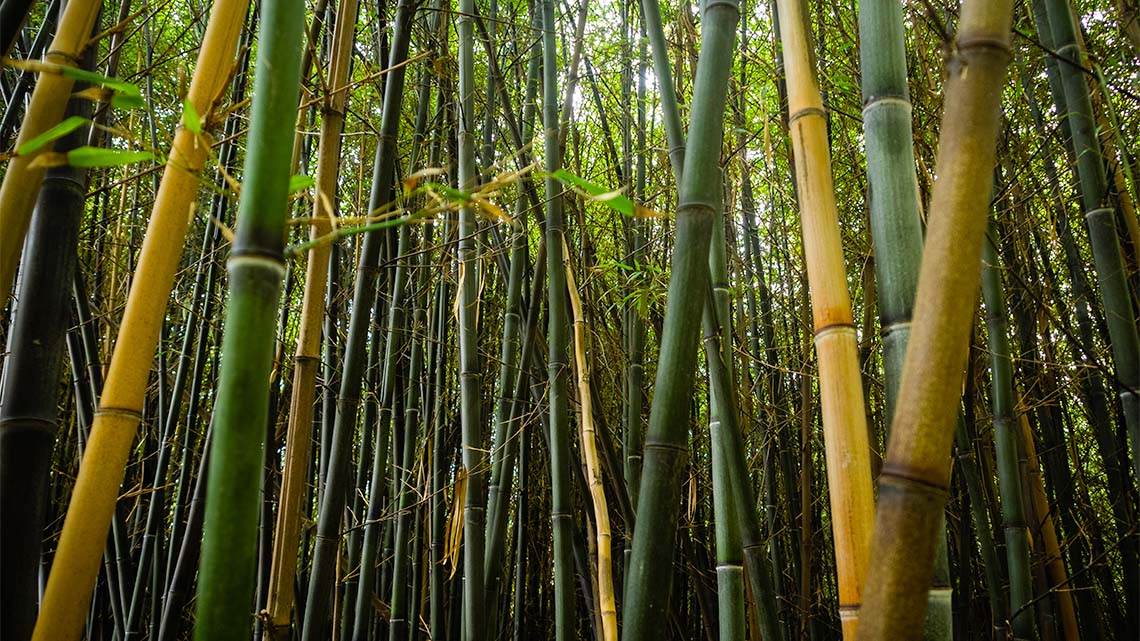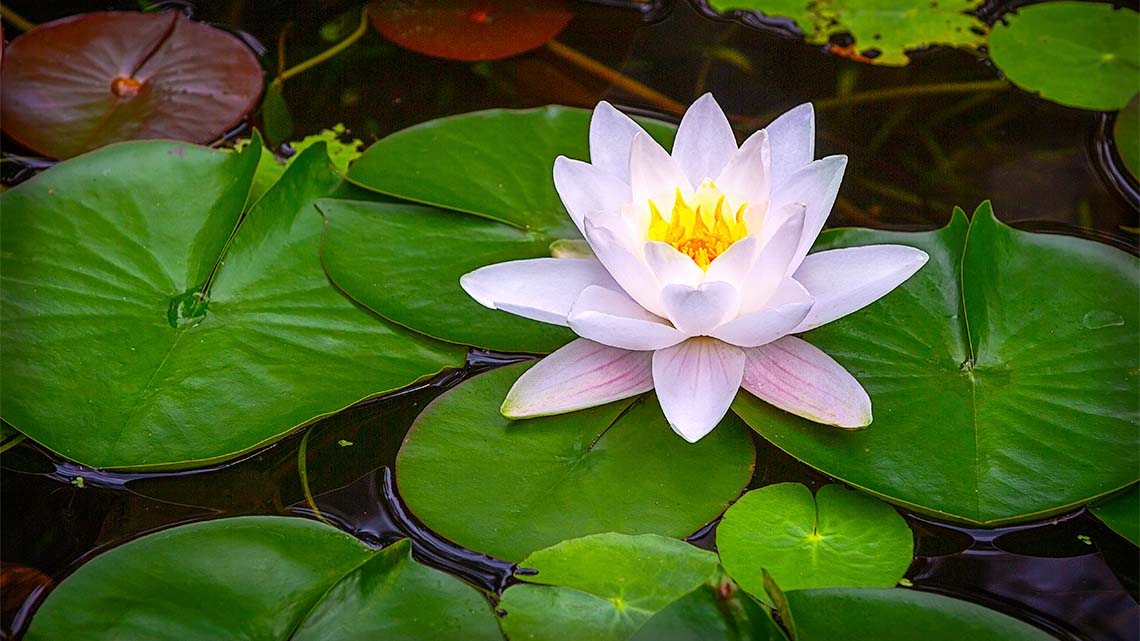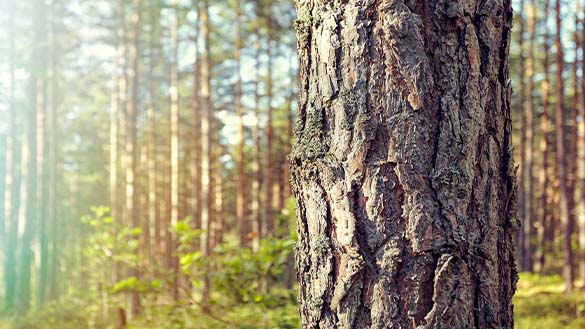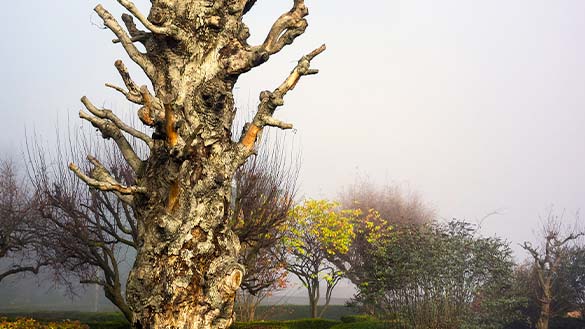Minds On
Plant survival
Just like humans, plants have certain things that they need to survive!
Brainstorm
Things plants need
What are some things that plants need to survive?
Record a list of your brainstorm using a method of your choice.
Press ‘Answer’ to access some possible answers.
Plants need light, air, water, nutrients, and space to grow.
One way to remember what a plant needs to grow is to remember the acronym “LAWNS”:
 Description
Description
L - Light keeps plants warm and helps them make food.
A - Air helps plants make food.
W - Water helps move food and nutrients to all parts of the plant.
N - Nutrients provide plants with the strength they need to grow big and strong.
S - Space is needed by a plant so that it has room to grow.
- What do you think could happen if a plant is not able to get everything it needs?
Record your ideas using a method of your choice.
Action
Parts of a plant
Plants have many different parts that work together to help it survive. Explore the following diagram that shows different parts of a plant.

A diagram representing the different parts of a plant. There is a tree and a plant. The truck of the tree is labelled, along with the roots, leaves, fruit and branches. The plant parts include the roots, stem, leaves, fruit, and flowers.
Each part of the plant has a very specific job. Complete the following matching activity to learn about the function of each part of the plant.
For each part of a plant, select the corresponding definition.
Sometimes, in order for plants to meet their needs, they have to adapt to their environment. Let’s learn more about this in the next section!
Adapting to changing climates
Plants are all different and have different ways of living and surviving in different places. Plants in diverse habitats have found ways to adapt to their environment. The different parts of plants suit the environment where they live.
Plant adaptation is a special feature that a plant has to allow it to live and survive on its own in a certain habitat. This explains why there are lots of plants in some areas, but not in others. Most of the time, plants have adaptations that are specific to their climate. For example, the climate may:
- be too hot or too cold
- be rainy or sunny
- be too windy
- have different bugs or animals
Press the following tabs to explore different plants and how they adapt to their environment.
A desert has a lot of sunlight and very little water. A cactus is an example of a plant that has adapted to live in the desert. The stems have a thick, waxy coating to slow the loss of water and have shallow roots to collect as much water as possible. They also have spikes to protect from animals.

A tropical rainforest is very warm and gets a lot of rain. Because it rains so much, plants risk growing bacteria on them. Bamboo is an example of the plant that has adapted to live in the rainforest. Bamboo has a waxy surface to bead off rain and avoid growing bacteria. It goes very tall very fast to reach the sunlight.

The Tundra experiences winter much of the year, which means temperatures are below freezing, there is very little sunlight, and precipitation often falls in the form of snow or ice. To survive these conditions, most plants in the tundra have the following adaptations: shallow roots, guarded growing, special leaves, and have the ability to go dormant (goes to sleep for a period of time). Moss is one example of a plant that adapts to the Tundra. It goes very low and close together to store energy for the cold months and doesn’t require a lot of rainfall to survive.

A water lily is a plant that has adapted to survive in the water and is an example of a “floating plant”. Floating plants grow on the surface of the water and are anchored by their roots to the bottom of the water. This allows part of the plants to be exposed to the sunlight it needs to survive, and the other portion can still gather nutrients. Other aquatic plants have different adaptations depending on the type of water they live in. For example, some plants need to be deeply rooted to resist the flow of a strong stream or river. Others are designed to live fully under water.

In the following Matching activity, choose the type of plant that best fits the habitat!
Threats to plant survival
Environmental conditions can change over time, and sometimes these changes can threaten plant survival. Explore the following environmental conditions that may threaten plant survival.
Adapting to change

In order to understand how plants and forests are changing and adapting to their environments, it is important to study them over time and how they are reacting to their changing environment. There are specific careers that focus on this, such as a Forest Program Manager.
Kerry is a Forest Program Manager. She studies forests across Canada to understand whether there has been a change in types of trees that are growing in different forests as the climate changes.
- Which of these ways do you think would help a Forest Program Manager tell if the species of trees are changing?
Explore the following checklist and choose which ways would help!
Climate change checklist
Explore the following When I Grow Up video entitled “Forest Manager” with Mikaela and Kerry to learn how forests are made of different types of trees existing together.
One of the most important jobs of a Forest Manager, like Kerry, is to keep forests healthy! If a forest is healthy, it is more likely to be able to withstand environmental changes that threaten its survival, like a forest fire.
Forest fires are large, uncontrolled fires take place in the forest. Forest fires can harm trees or plants and prevent them from growing healthy in the future. Forest Managers help to prevent forest fires by managing a healthy, fast-growing forest. Healthy, well-managed forests can also absorb more moisture and resist damage from fires, insects, and disease.
Some trees even have specific adaptations that help them survive and recover from a forest fire. Explore these adaptations below.

Thick bark protects the inside of the try from overheating.

Self-pruning branches fall off to avoid fire or disease, and this stops the fire from reaching the top of the tree.
While a Forest Manager works hard to keep forests healthy, and trees do their best to adapt to changing environmental conditions, there are a few things that can be done to avoid forest fires.
Using the following sorting activity, explore how forest fires occur and how they can be avoided.
Consolidation
Designing an adaptation

In this learning activity you have learned about what plants need to survive and how they can adapt to their environment to survive various threats.
You are now going to design a plant or tree that can adapt to survive in a specific environment using a method of your choice.
Use the following checklist to help you.
Designing an adaptation checklist
Record your design for a plant or tree that can adapt to survive in a specific environment. Make sure to…
Reflection
How do you feel about what you have learned in this activity? Which of the next four sentences best matches how you are feeling about your learning? Press the button that is beside this sentence.
I feel…
Now, record your ideas about your feelings using a voice recorder, speech-to-text, or writing tool.